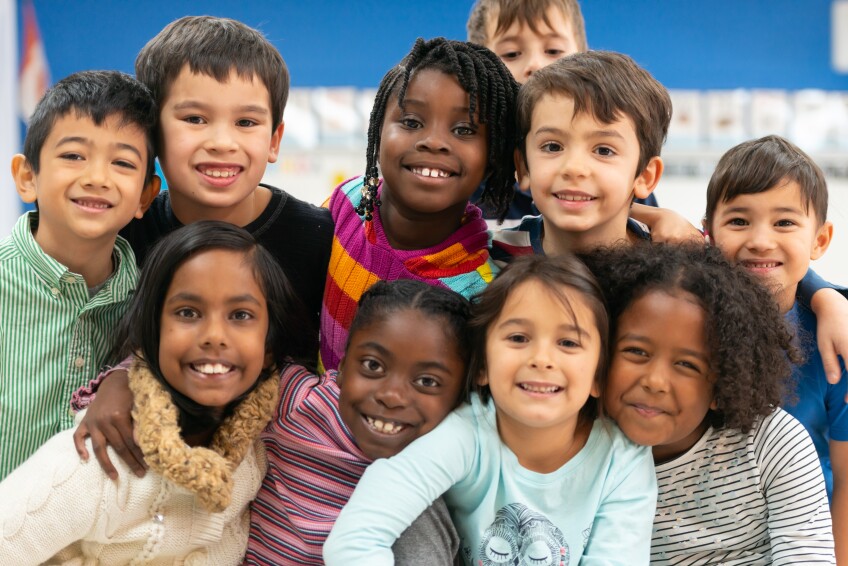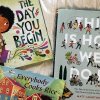Raising the Future: Teaching Kids How to Celebrate Our Differences

It is not our differences that divide us. It is our inability to recognize, accept and celebrate those differences.Audre Lorde
When you introduce children to the concepts of diversity and identity from an early age, you prepare them to become aware of the impact of biases and stereotypes on their social identities and others.' This awareness also allows them to develop critical thinking skills and agency to become activists.
Caregivers and educators can help young children identify the different social components of their identities, such as gender, race, ethnicity, culture, religion, ability, interests or family structure. As children learn to value each facet of who they are, it also helps them view themselves as unique individuals; they also become more inclined to care about and celebrate the social identities of others.
I have been doing identity work in my Spanish class for two years. I started because I felt that most resources and curricula for teaching World Languages were reinforcing and stereotyping the identities of the speakers of those languages. I wanted to design learning experiences where my students could explore their identities, and at the same time, examine the identities of others. When using this approach, my students not only learned the accurate, respectful language to describe themselves and others but learned to see the intersectionality of identifiers — or how multiple forms of discrimination overlap and intersect in how we identify each other. They learned how these identifiers could grant privilege, or sometimes, marginalize entire communities.
If you are an educator or a caregiver who wants to help your children develop a social justice lens and fight injustice, here's how you can get started teaching kids what it means to approach others in an intersectional way that values all aspects of our identities.
Self-Work: Recognize Your Identities and Biases
At this point, you must be wondering, "But how do I do this?" The first step is self-work. You, as a facilitator, must acknowledge and recognize your ownimplicit biases and develop a perspective in which you see identities with an intersectional lens. I encourage you to watch theTED talk by novelist Chimamanda Ngozi Adichie, in which Adichie "tells the story of how she found her authentic cultural voice — and warns that if we hear only a single story about another person or country, we risk a critical misunderstanding."
Unfortunately, because hegemony has been pushed in most places with a colonial past, many social groups or cultures are perceived as monoliths. Many of our implicit biases come from the ideas developed to obliterate diversity and marginalize specific communities.
As an adult, your goal should be to deconstruct these biases and dwell on their impact. You should also be aware of your social identifiers and their role in the power dynamics of privilege. Understanding intersectionality, identity privilege, power dynamics, equality and equity is crucial before introducing these ideas to kids.
Helping Kids Recognize Their Own Identities and Biases
After you recognize your own biases, it's time to teach kids to value all aspects of their identities and recognize, accept and celebrate the identities of others.
How? You can help children identify similarities and differences among people, guide them in appreciating diversity, help them develop a respectful attitude toward different identities and give them tools to build bridges of connection and understanding with anyone.
A little research can help you determine your students' social identities, such as their ethnicities, cultural backgrounds, linguistic repertoires, family structure, gender identity, etc., and the biases and stereotypes attached to the different social identities that they might have been exposed to. Anti-Black or anti-Asian biases, homophobia, misogyny, machismo and anti-immigrant attitudes can be pervasive.
It's essential to recognize that children do not grow up in a vacuum. The reigning biases and oppressive systems that permeate society reach their minds in one way or another. The idea is that you, as a facilitator of these conversations, help model brave, curious, respectful exchanges and create spaces where children feel strong about who they are without having to feel superior. These will then be spaces where they feel comfortable and excited to discuss and celebrate each other's similarities and differences.
Children actually absorb biases from the world around them when they are not guided to think about them critically.
According to Louise Derman-Sparks andJulie Olsen Edwards, leaders in anti-bias education, it's also necessary to activate children's innate sense of fairness and justice. They explained that the assumption that children foster prejudices once they become aware of differences is entirely false. Children actually absorb biases from the world around them when they are not guided to think about them critically. Silencing — or omitting how different identities are more prone to be stereotyped and discriminated against — prevents children from developing an anti-bias mindset.
How Picture Books Can Help
One of the best ways to initiate this sort of conversation with children is through picture books. However, it's essential to acknowledge that anti-bias education can not be reduced to occasional activities about diversity. Quite the opposite, it must be sustainable.
Multicultural literacy educatorRudine Sims Bishop said diverse books are necessary because kids need to see themselves in them and see other people and other worlds.
However, lack of representation is a serious problem in the children's literature publishing world since the industry reflects the dominant biases and privileges in our world today.
Fortunately, many teachers, librarians and authors have been campaigning for diverse literature at schools, libraries and independent publishing groups. Nowadays, you can find many books written by authentic voices that can be the first sparks to get children to celebrate different identities and value their own.
After you acknowledge that you need to choose the books and topics for discussion with an anti-bias lens, it's not that difficult to find books that represent various social identifiers.
And remember, all people (including children), regardless of their social identifiers, need to work on this. In the words of Rudine Sims Bishop:
... that's the reason that the diversity needs to go both ways. I mean, it's not just children who have been underrepresented and marginalized who need these books. It's also the children who always find their mirrors in the books and, therefore, get an exaggerated sense of their own self-worth and a false sense of what the world is like because it's becoming more and more colorful and diverse as time goes on.
How are you going to celebrate your children's differences today? How are you going to encourage them to celebrate other people's identities?
The journey starts with us. As Maya Angelou said,"When we know better, we do better," and a first step is better than none.
Resources
- Learning for Justice offers tools for caregivers working to eliminate systemic injustice.
- "Mirrors, Windows and Sliding Glass Doors" featuring Rudine Sims Bishop.
- "Julie Olsen Edwards: How Teachers Can Help Children's Identities Grow."
- "The danger of a single story | Chimamanda Ngozi Adichie" TED Talk.
- Find our selection of kids book lists here.


